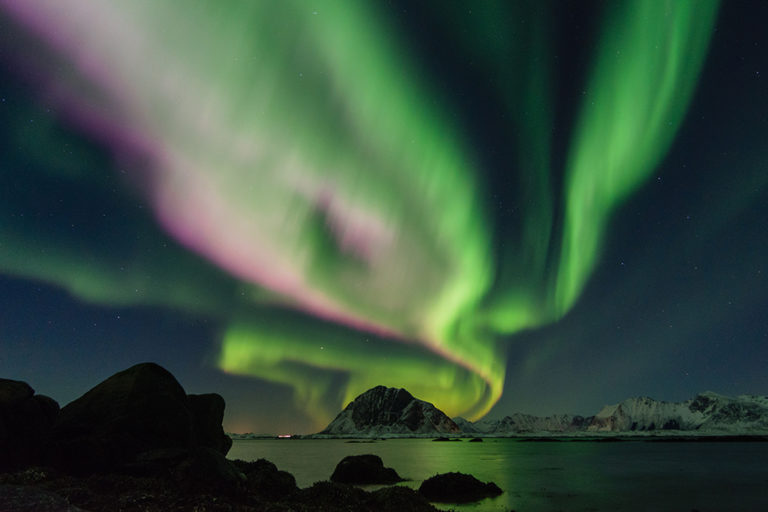The aurora borealis or northern lights can be seen over polar skies on dark nights between August and April, but tend to be more prolific during equinoxes in March and September.
The shimmering sheets of light can look peaceful, but according to NASA, the spellbinding, colourful lights ‘are the product of violent collisions between Earth’s atmosphere and particles from the Sun’.
Last week, residents of Northern Norway got to view artificially-created aurora borealis as part of a NASA-funded experiment.
In an attempt to understand the contribution that the aurora make to the total amount of energy that enters and leaves Earth’s geospace system (invisible kinetic and thermal energy is released by the collisions), the Auroral Zone Upwelling Rocket Experiment or AZURE was established.
NASA launched two sounding rockets on the night of Friday, 6 April from the Andøya Space Center in Norway to create these artificial auroras. The impressive sight of purple and blue lights in unusual circular patterns was viewed by only a handful of people, but thanks to social media you can see them too.
A natural aurora borealis is shown below.

Northern Lights, Lofoten, Norway. Image credit: Johannes Groll
Feature image: NASA Wallops
You may also like
Related Posts
China’s National Health Commission has published a list of controversial coronavirus treatments that have animal...
read more
Warmer sea temperatures in the summer months, especially in February, were recorded and are believed...
read more
The latest report indexing the world's happiest countries has highlighted the important role of...
read more